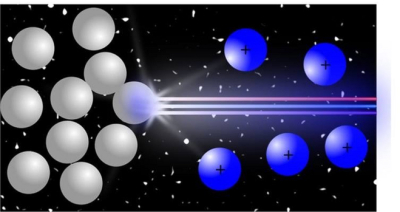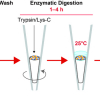
Even tiny amounts of plutonium are harmful to human health and the environment. But plutonium also helps us study the universe: the isotope plutonium-244 hints at nucleosynthesis and neutron star mergers. Researchers, therefore, need ways to detect what they call “ultra-trace” plutonium. Ultra-trace refers to tiny amounts of a material—similar to the mass of a nucleotide of the DNA in a single human cell. Researchers have now used special lasers to study the fingerprints of plutonium’s photoionisation. This is the absorption of enough energy from light to cause an electron to leave and create a positive ion. The technique allowed researchers to identify ultra-trace amounts of plutonium atoms at record levels of efficiency.
Detecting plutonium is important for many areas of scientific research. It is part of studies such as nuclear forensics and safeguards, environmental science, reactor safety and astrophysics. Among other variables, scientists study the concentration of plutonium and the ratios of its various isotopes in samples. However, these samples usually contain only tiny ultra-trace amounts of the element. With this new technique, nuclear physicists improved laser ionisation efficiency of plutonium tenfold. This frees more of this element for analysis by resonance ionisation mass spectrometry.
Investigators studied three-step resonance photoionisation spectra of plutonium with titanium-sapphire lasers. The goal was to develop more efficient laser ionisation schemes for ultra-trace analysis of plutonium isotopes by resonance ionisation mass spectrometry. This technique can benefit a diverse range of applications. For example, plutonium-244 is the longest-lived plutonium isotope, with a half-life of about 80 million years, and its observation in deep-sea crusts and sediments tells scientists something about the nucleosynthesis of chemical elements in neutron star mergers. For these applications, scientists need extremely sensitive analytical techniques to characterise plutonium isotopes and their abundances.
In this study, researchers from Oak Ridge National Laboratory and the University of Tennessee, Knoxville used three pulsed titanium-doped sapphire laser beams to examine spectra created from plutonium’s photoionisation. The technique uses stepwise resonant excitation of the atoms with three photons to achieve extremely high element-selectivity. The ions produced are mass-selectively detected. This leads to excellent isotope selectivity and background suppression from undesired species. The researchers observed thirteen new second-step energy levels, and they chose six to investigate a large number of third-step states. These efforts led to the identification of a highly efficient three-step scheme with an overall ionisation efficiency of more than 50 % for plutonium—a ten-fold improvement over its previously reported ionisation efficiency.









